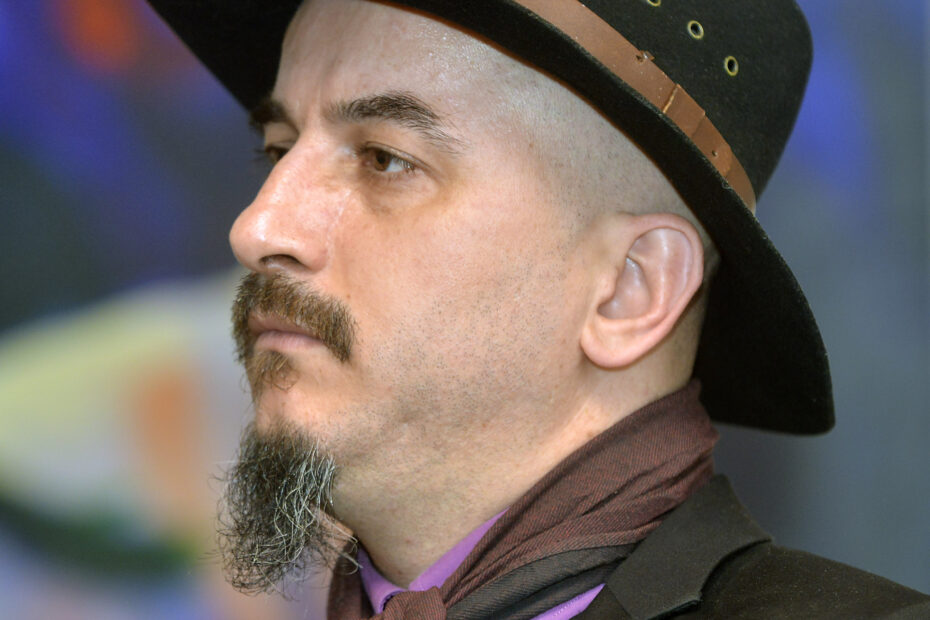Zdenko Jurilj, a Herzegovinian director best known for his work on documentary films and his long-standing journalism career, is attending this year’s Sarajevo Film Festival in two roles: presenting his debut feature film Stigmas and serving as a jury member for the BiH Student Competition Program. We took the opportunity to have a brief conversation with him.
- Stigmas is your debut into the world of feature films. What is the difference between working on documentary and feature films, and why did you decide to make this transition?
Most so-called “filmmakers” harbour an intention, at least subconsciously, to try their hand at as many film genres as possible. Of course, there was also some encouragement from colleagues who are already established in the world of feature films. Influenced by them, I decided to take this step, while not disregarding the importance of documentary filmmaking. The difference between fictional and documentary forms is evident on multiple levels. First, we are dealing with imagined plots, and imagined characters, and that is the strongest argument that entices you to engage in feature film work. Of course, feature films can be based on real events but can also be supplemented with imagination, creative elements, and dramatization. Here, you play with aesthetics and style, you can use different stylistic approaches, be artistically freer in terms of camera work, music, and editing to create a specific tone or mood. In documentary films, such “games” are limited because real footage and interviews are often used, and filming can take place in real environments with real people and their destinies. Overall, it has been a wonderful experience, and we continue with the feature format.
- The film’s plot takes place after World War II, and the characters are tobacco smugglers. Why do you think it is important or necessary to return to that atmosphere?
This film story is not exclusively ours, domestic… I would rather say it is universal. Shortly after the end of World War II, five men attempt to save themselves and their families from starvation by smuggling tobacco from Herzegovina to Bosnia. On this illegal smuggling journey through canyons, forests, and mountain gorges, there are still remnants of defeated armies, and police arrests occur at every step. While they are in fear of an invisible enemy that we do not detect visually, only through sound, through distant gunshots and noises, tensions arise among them due to a young traveller named Drago, played by Bojan Beribaka, precisely because of the still painful topic: whose father or son was Ustasha or Partisan. Under pressure from physical, psychological, and verbal stress, Dragan eventually breaks down emotionally and ends tragically. At its core, the film raises questions about disputes over ideological standards, the ghosts of the past, and the meaning of revenge, which remains significant in almost all societies today, not just our Balkan one.
- Why black-and-white film?
Black-and-white photography from the start corresponded to the time in which the story takes place. Of course, the director of photography, Mirko Pivčević, also has a special fondness for black-and-white images. Since the entire film was shot in the harsh natural exteriors of Herzegovinian mountains and almost bare rustic interiors, such as abandoned barns and caves where the smugglers hid, we thought that black-and-white technique would serve as a double metaphor depicting the suffering while fleeing from police cruelty, the power of the system, as well as the state of mind and psychological states of the characters on this tobacco journey. It’s like a yin-yang symbolic concept from Chinese philosophy describing how opposing and often contrasting elements are interconnected and interdependent.
- You work quite successfully in Herzegovina, in your hometown of Široki Brijeg; from your perspective, is there a difference between authors coming from Sarajevo and other cities in Bosnia and Herzegovina?
According to McLuhan’s theory, we all live today in some sort of “global village” where modern technologies allow us to break down barriers. Accordingly, I do not see much difference in working between Sarajevo, Zagreb, Belgrade, or a smaller place. Of course, I am speaking from the context of technology. When it comes to realizing a feature film project, you then see the huge difference in human resources and technical knowledge that you need to bring from larger cities. In big cities, everything is available, while in small places, you must import everything. In big cities, when a film is in the editing phase, you can engage in various types of analysis with colleagues, receive professional reviews, and hear other people’s reactions and reflections. Whereas in smaller places, it is challenging to access such thoughts when the film is in the editing stage.
- This year, you are a member of the jury for the BiH Student Program—what do you expect from it?
I expect that new generations will bring their own artistic expression, I look forward to pleasant surprises, and I anticipate seeing works that are innovative, show technical, and artistic quality, are socially relevant, and demonstrate a high level of professionalism and dedication. I hope that students will address relevant and engaged topics that are important for society and culture in general.




